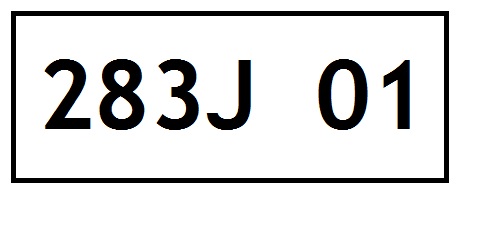
Details of the 1968 GT350 4spd Engine

Here are some details of the "J code" 1968 Shelby GT350 4 speed engine.

All Shelby 302, 4 speed engines were built to the same specifications. The code number would also be present on the engine tag. Options, like power steering and air conditioning, do not change the basic engine configuration. Cars with these options still have the thermactor emission controls.

The block should have the casting number "C8OE-6015-A". This number is cast into the side of the block, behind the starter motor.
The block also has a casting date. That date should fall before the build date of the car. Here "7H21" translates to August 21, 1967. That is a
very, early date code.

Engine blocks are also stamped with serial numbers. This number is on the rear of the block, near the firewall, when the engine is installed.
This area is usually painted, so the numbers can be hard to locate.
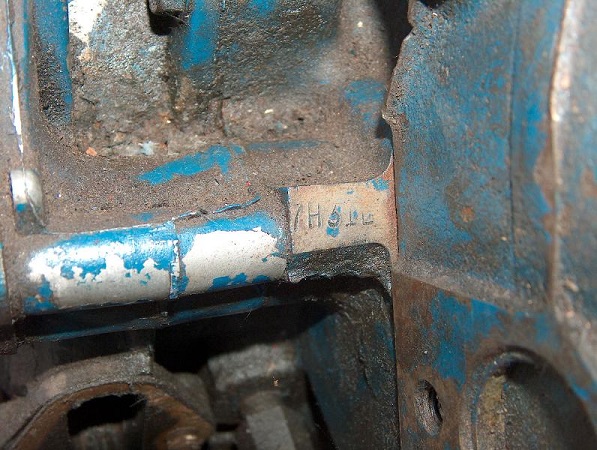
An engine assembly date is also found stamped on the front of the engine. This is located near the fuel pump. The date shown here is "7H31" or August 31, 1967.
All GT 350s used the steel oil pan from the factory.
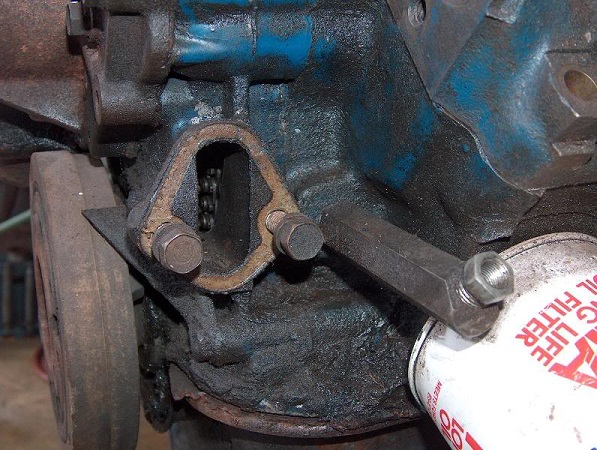
An oil pressure sender extension and small fitting are used to mount the oil pressure sender.
Here is another view with the power steering pump removed.
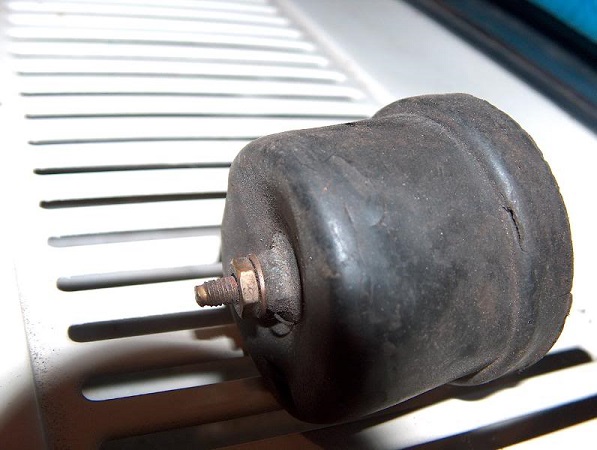
The sender is the same on all 1968 Shelbys. It is a Stewart Warner sender with a rubber boot. Some early cars used a sender wire that had
and eyelet. This sender has a nut to secure the sender wire. More commonly the wire had and elbow connector.
The alternator should have the correct wiring. The wiring has a "dogbone" that locates each wire in its proper location.
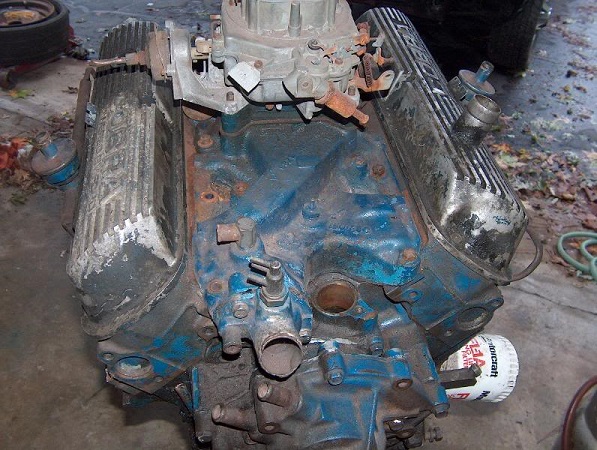
Almost all GT350s were originally built with the cast iron intake manifold. It is cast with the engineering number C8ZE-9425-A. It also has a date code visible on the front.
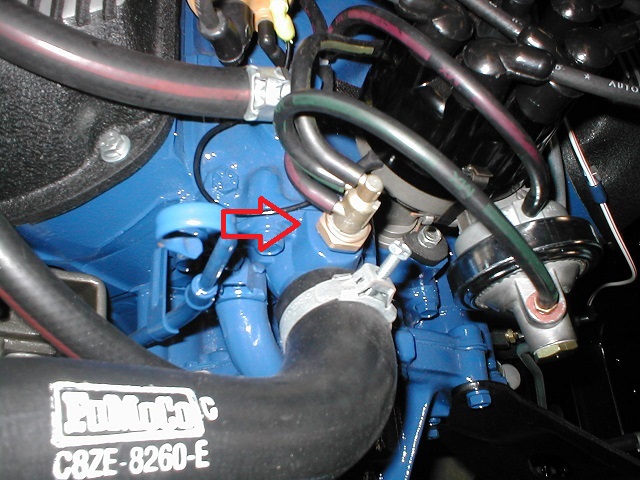
The ported vacuum switch on the front of the intake should have some blue paint around the base. It was present when the engine was painted and masked off.
The distributor is marked C8ZF-12127-A. It will have a dual style vacuum advance.
The dipstick is painted blue with the engine.
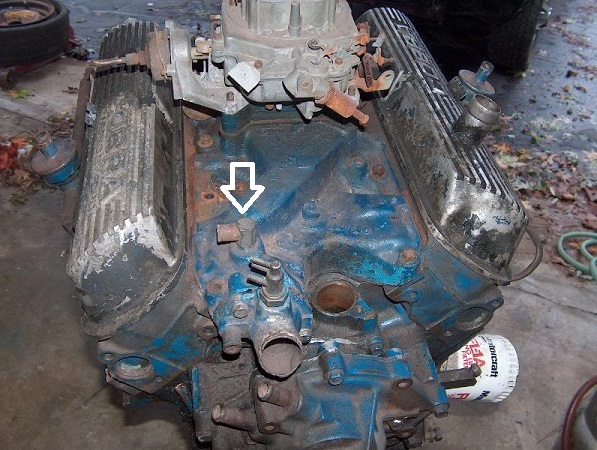
I believe the intake heater hose fitting was screwed in when the engine was painted and it should be blue.

The fitting that screws into the manifold was painted and has four vacuum attachments. A small looping rubber hose connects the two inner vacuum ports.
The upper fitting is unpainted and connects vacuum to the brake booster.
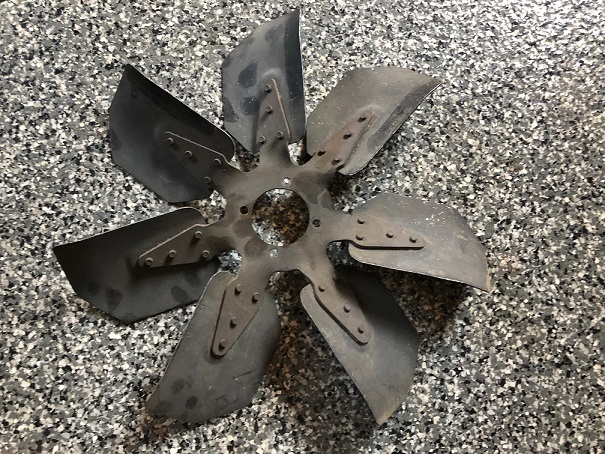
The engine cooling fan has seven, rigid blades. It is stamped "C6OE-G".
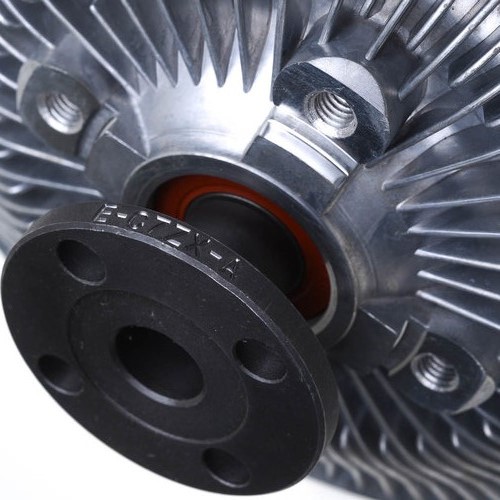
The engine cooling fan uses a variable speed clutch stamped "C7ZX-A". If you need a fan, please go to my For Sale page and find Chris Brown Restorations.
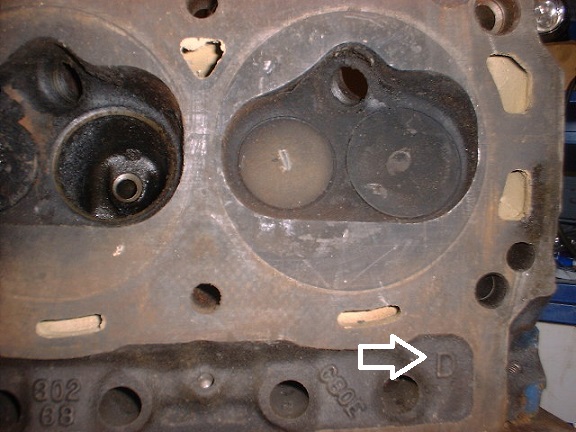
The cylinder heads are cast "C80E-D". The 4 speed heads are unique because they have smog ports for the thermactor emission tubes.
All "283 J 01" engines were originally equipped with thermactor emissions.
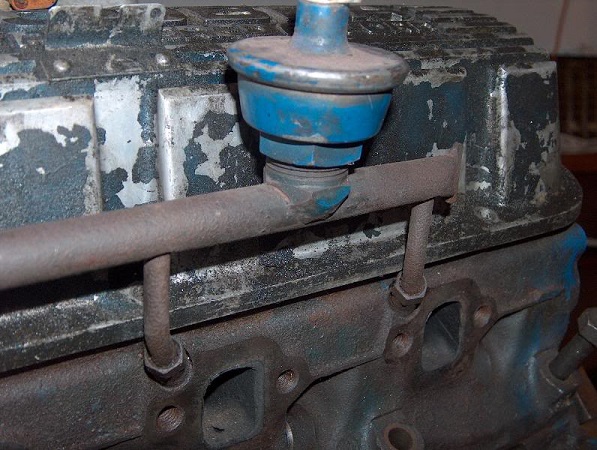
This picture shows the thermactor tube and valve installed in the cylinder head.
Thermactor tubes are unique to 1968s. The position of the check valve changes slightly from earlier years. In addition, the tubes came in two varieties. Some tubes had crimped ends, while others
had caps. This was most likely due to vendor supply.
This NOS tube is part number C8AZ-9B445-A.
The smog pump bracket is cast iron. It was left cast iron with machined surfaces.
The smog pump bracket has an ID number of C8OE-9B450-A.
The bracket for the anti-backfire canister is stamped C8OE-9C486-A.
The check valve is the same as the 428 Cobra Jet. It is part number C8AZ-9A487-A. Pay attention to the nipple size. The correct one is 5/8 inch.
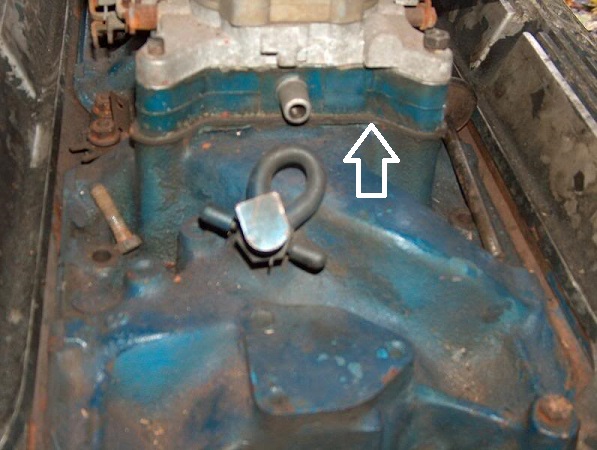
The carburetor spacer was aluminum with one vacuum port on the back. It was present when the engine was painted.
The vacuum port connects to the pcv valve in the valve cover.
The driver's side valve cover features a push-on style, chrome oil cap.
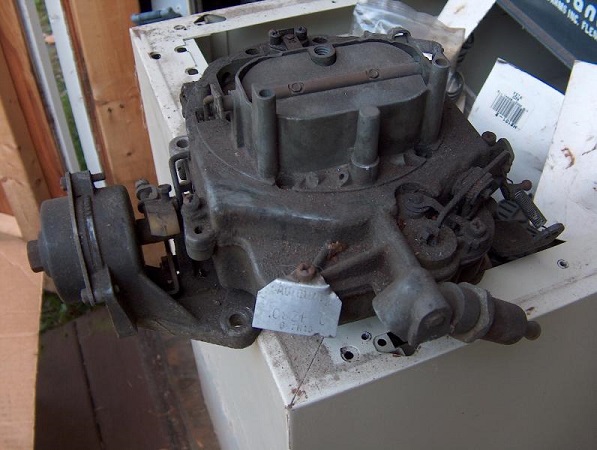
The carburetor used was the Autolite "C8ZF-9510-C" . That number will be on the carburetor tag and stamped into the base of the carb.
Original valve covers are easy to spot. They have square notches where the bolts attach. They were original black, crinkle finish to match the air cleaner lid.
Here is another picture. You can see the square notch around the bolt. The retainer for the wiring was transfered from the original, steel valve cover and should be
painted blue as shown.
The GT350 used the same cast iron exhaust manifolds as the Mustang.
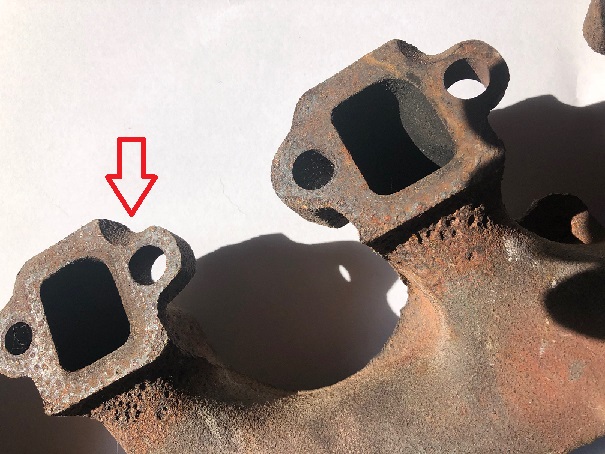
The 4 speed manifolds do have extra machining on the mounting surfaces to provide clearance for the smog tube ferrules.
283J 01 GT350 / 4 speed
DRIVE PULLEYS WITH POWER STEERING, WITH THERMACTOR
| Pulley | Pulley ID Number | Sheaves |
|---|---|---|
| Crankshaft | C8OE-6312-C | 3 |
| Water Pump | C7OE-8509-B | 3 |
| Alternator | Stamped Steel | 1 |
| Power Steering | 7AE | 1 |
| Thermactor Pulley (Smog) | C8AE-9C480-A | 1 |
283J 01 / GT350 4 speed
DRIVE PULLEYS WITH POWER STEERING WITH AIR CONDITIONING, WITH THERMACTOR
| Pulley | Pulley ID Number | Sheaves |
|---|---|---|
| Crankshaft | C8OE-6312-B | 3 |
| Water Pump | C6AE-8509-A | 2 |
| Alternator | Stamped steel | 1 |
| Power Steering | 7AD | 1 |
| Thermactor Pulley (Smog) | C8AE-9C480-B | 1 |
| Air Conditioning Pulley | 1 |
A special thanks to Phil for sharing pictures of his engine for this article.